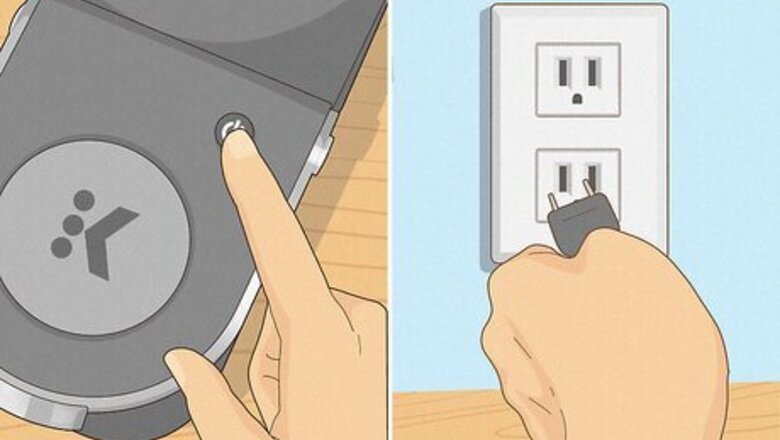
views
Reset your Keurig.
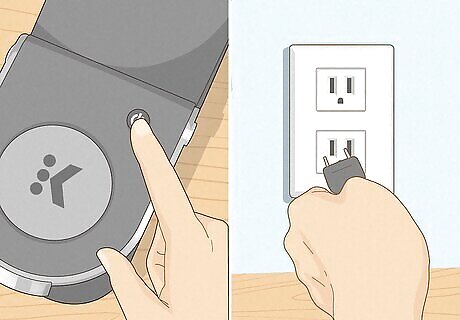
Reset your Keurig to fix malfunctions. If your Keurig isn't responding when you press the buttons, you may need to reset it. To do so, power it off. Then unplug it for 30 seconds. Plug it back in and power it on.
Test the electrical outlet.
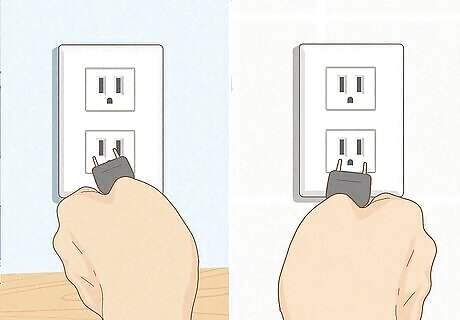
Plug your Keurig into a different outlet. If your Keurig won't turn on, check to make sure it is getting power. Try plugging it into a different electrical outlet. Make sure the breaker that controls the electrical outlet your Keurig is plugged into hasn't popped. Sometimes running your Keurig along with other appliances (such as a toaster oven or air fryer) that are plugged into the same outlet or wall will cause your breaker to pop. Make sure you limit the number of appliances running at the same time.
Run a few cycles without a K-cup.

Run water through your Keurig without brewing coffee. If your Keurig is only producing a small amount of coffee or there are grounds in your coffee, it could be clogged or there is build-up inside the tubes. Fill the reservoir with water and run several brewing cycles without a K-cup until the reservoir is empty. This will help flush out your Keurig and clean the inside.
Descale your Keurig.

Descale your Keurig machine every 3 months. This will help clean out any limescale build-up inside your machine. You can descale your Keurig using Keurig cleaning solution or a mix of half water and half vinegar. Pour the solution into the reservoir and run several cycles without a K-cup until the reservoir is empty. Then wash the reservoir and run a few more cycles with just water to flush out the vinegar or cleaning solution.
Clean the needle and K-cup holder.
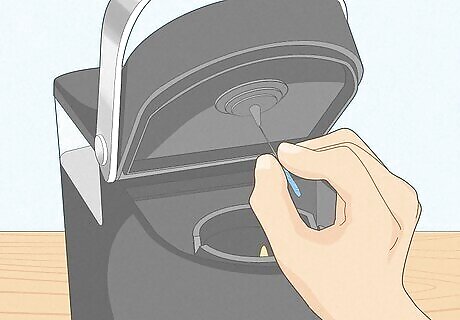
Built-up gunk can cause clogs or grounds in your coffee. If you get grounds inside your drink or it's not brewing properly, you can clean the needle, K-cup holder, and surrounding area with a small, soft bristle brush. You can also unclog the inside of the puncture needle using a special tool. If you don't have a special tool, cleaning expert Ryan Daniel Santos tells us that you can clean the inside of the needle using a paper clip or a toothpick.
Turn your Keurig upside-down and shake it.

Shake your Keurig to dislodge any air bubbles or build-up. One thing you can do to fix your Keurig if it's not brewing or barely brewing is to unplug it and remove the reservoir and tray. Turn your Keurig upside down over a sink and gently shake it. Then tap on the bottle a few times and shake it some more. Plug it back in and see if it works.
Use bottled water.
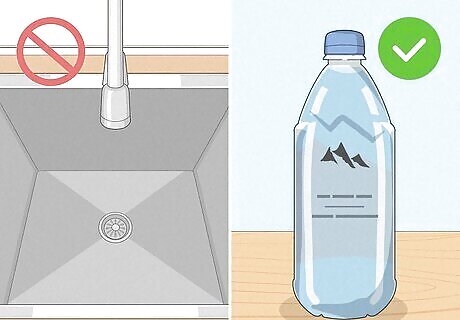
Use water that isn't too hard. If your tap water is particularly hard, you may get a lot of build-up inside your Keurig rather quickly. Try using bottled water instead, or put a filter on your water faucet. Keurig recommends against using distilled water or overly soft water.
Change the water filter.
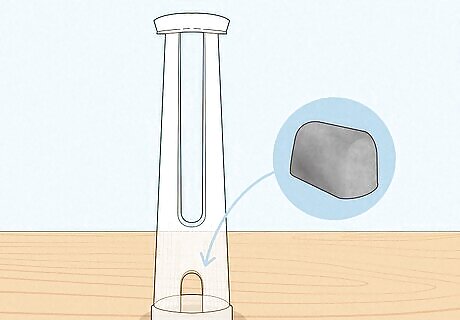
Change the water filter every three months. If your coffee is starting to taste stale, it's not dispensing as much coffee, or there is excessive build-up, it may be time to change the water filter. Not all Keurig models have a water filter. To replace the water filter, purchase a new cartridge and rinse it. Remove the old cartridge from the holder and insert the new cartridge. Reinsert the cartridge holder back in the reservoir.
Make sure the reservoir isn't damaged.

Check the reservoir for cracks or leaks. If your Keurig is leaking water, check to make sure the reservoir tank isn't damaged. Check the O-ring on the nozzle on the bottom of the reservoir to make sure it isn't damaged. If it is, you can purchase a new O-ring to replace it. Make sure the reservoir is seated properly.
Make sure the reservoir is seated properly.

Reseat the reservoir. If your Keurig is leaking or dispensing too much water, remove the reservoir and reseat it. Make sure it is seated properly against the machine. Also, check to make sure you aren't filling the reservoir past the fill line.
Check your Keurig for flashing lights or beeps.

Look for signals there is a problem. If you see flashing lights or hear beeps, your Keurig could be trying to alert you to a problem. Flashing lights and beeps may mean something different for different models. Consult the user's manual or manufacturer's website to see what the beeps and flashing lights mean. For example, a flashing light might indicate that you need to descale your Keurig or clean the needle.
Contact Keurig customer support.
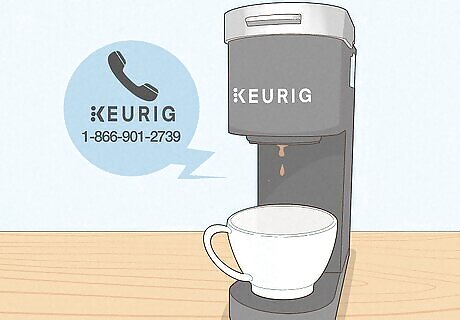
Get help with your machine. If you've tried everything and your Keurig is still malfunctioning, there could be a problem with the internal components. In this case, you will need to contact Keurig support. You can call Keurig support at 1-866-901-2739.


















Comments
0 comment